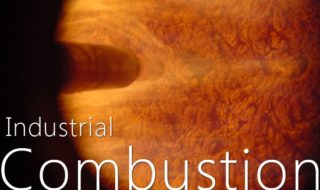-
Industrial Combustion Journal: Paper published
Date posted:
-
-
-
Post Author
Lucy StrakerIFRF Administration & Communication Coordinator
-
-

We are pleased to announce the latest paper to be published in our online journal – Industrial Combustion.
‘Experimental Investigations on Spray and Combustion Characteristics of Kerosene Oil Injected Through Pressure Swirl Atomizer’ was written by Jitendra Patra of Jadavpur University, India, and supported by Amitava Datta, Ranjan Ganguly, Swarnendu Sen, Souvick Chatterjee and Ritabrata Saha, also of Jadavpur University, India.
View Jitendra Patra’s paper here.
To give you an idea of this paper have a look through the abstract below:
The work describes experimental investigations on spray and combustion characteristics of kerosene fuel using a pressure swirl atomizer. The flow number, spray cone angle, Sauter Mean Diameter (SMD) and liquid patternation for the spray were evaluated from the spray experiments under different liquid flow rates. The sprays were found to be of hollow cone type with constant flow number over the range of operating liquid flow rates. The study indicates the existence of a fully developed air core in the spray, with the cone angle increasing with the fuel flow rate. Combustion experiments were performed at different Reynolds numbers, primary to secondary air flow splits in the combustor and also at different air-fuel ratios. The flame characteristics in combustion were analyzed using high-speed photography when the average brightness of the flame, standard deviation of the average brightness and flame flicker frequency were evaluated from the images. The flames were found to be more luminous, with higher brightness percentage, at larger Reynolds numbers, higher primary air fractions and also at lower air-fuel ratio. The standard deviation of average brightness and flicker frequency were also found to increase under these operating conditions. Non-linear dynamic analysis of the system using time scale data through correlation dimension showed stochastic nature of the system. In the initial section of the combustor, the wall temperature was observed to increase due to the radiative heat transfer from the flame. However, near the exit section, the heat loss from the wall resulted in a gradual decrease in the wall temperature.
If you would like to submit your paper to the Industrial Combustion Journal you can do so through our website here.
